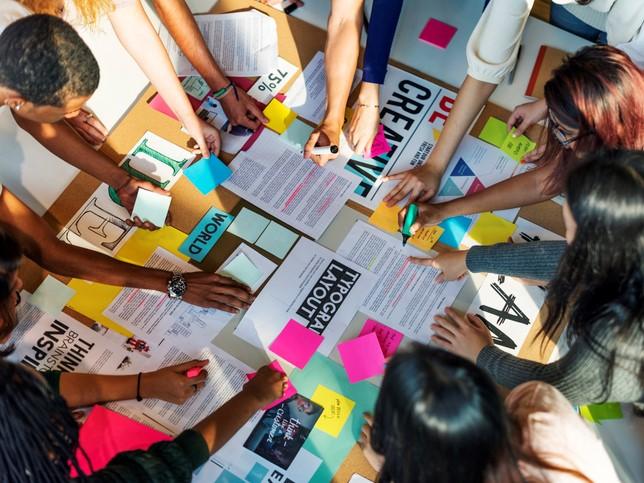One of the best lessons a university can teach its students is the ability to innovate, which has the potential to help them throughout their personal and professional lives. In the modern world, it’s hugely useful for students to be able to develop and generate innovative ideas to address problems using a creative approach, while still generating value. To achieve this, there are numerous strategies or methodologies, but we’re going to concentrate on design thinking.
Design thinking is a methodology used primarily to generate innovative ideas and create new products or services. Its main focus is understanding and providing solutions to the real needs of users. The traditional steps of design thinking are: empathise, define, ideate, prototype and test. However, for our particular application case, the steps were adapted to: empathise, ideate, prototype, create the value proposition and pitch.
- It’s a game changer: using design thinking to find solutions to the SDGs
- Five tips for using design thinking to transform your academic practice
- How can we support innovation in teaching practices within universities?
To help students to use design thinking, it can be introduced and applied in workshops. This will allow them to get to know the methodology and apply it as part of their learning processes. When putting it into practice with your students you can adapt the original steps according to the objectives and times of your course, if necessary.
Here are a few recommendations to consider before starting to work with the steps:
1. Take some time to explain and talk about the methodology with students, explaining what it is, what it’s used for, what its approach is, and so on.
2. Show students the steps they will follow during the workshops, and clarify when one has started and finished so they understand what each step consists of.
3. Ensure success by listing in advance the submittables and their characteristics.
Once your students understand the steps, show them the problem for which they must come up with innovative solutions. We recommend using a problem that is familiar to the students. In our case, the problem consisted of making improvements to the campus cafeteria.
Once the students know the problem, they are divided into teams to start with the first step:
Empathise
In this step the students can use an empathy map, which is a tool that allows them to gather information that will be helpful for the next steps. You can find a template here. In this stage, you should show students a document with information about a real user (in our case, of the cafeteria) so they can get to know the type of user he/she is, their preferences, concerns, experiences, and so on.
Ideate
The objective of this phase is to generate as many ideas as possible, which will be the basis for creating solutions. An environment of trust should be created to encourage students to let their imaginations run wild. Tell them that all ideas are welcome and that there are no good or bad ideas at this point. From all the ideas generated they then select, as a team, the one that allows them to best solve the problem considering the user’s needs.
Prototype
Using the selected idea, students are then asked to create a prototype. Explain to them that a prototype is a physical or digital sample/model that’s used to test a concept or idea in order to help them validate their proposal and improve it.
Some useful websites to work on prototype apps are Invision and Marvel. And when explaining the idea of a new service or experience, storyboards can be very helpful, with useful tools including Plot, Studiobinder, StoryboardThat and Comica.
As part of this phase, students must also come up with the strategy design. Based on the prototype, this means designing a strategy for presenting the solution to the user. To achieve this, students must define for their product or service: name and logo; market segment; competitive advantage; resources (people, costs, time, equipment, among others).
Create the value proposition
In this step students must prepare their value proposition to compete with the rest of the teams, as they will present it in front of the “stakeholders” (who may be the instructor or a peer). A value proposition requires students to highlight the benefits of their solution, as well as what makes them the best choice.
Pitch
This is the final step, in which students present their solution and receive feedback from the instructor, peers or a guest. If possible, invite a peer expert on the problem to participate as a reviewer of the final proposals; this will motivate students in their creative process and provide an unbiased approach. Here is a pitch canvas template you can share with your students.
In conclusion, remember that the objective of using the design thinking methodology is to promote the ability to innovate among your students. The above recommendations will be useful when planning a workshop for learners or, indeed, any group within your organisation, as you can adapt the methodology to whatever situation or problem they are currently facing.
Karla Margarita Banda Martínez and Graciela González-Valdepeña are solution design leaders, educational innovation and digital learning, at Monterrey Institute of Technology, Mexico.
If you would like advice and insight from academics and university staff delivered direct to your inbox each week, sign up for the THE Campus newsletter.




comment